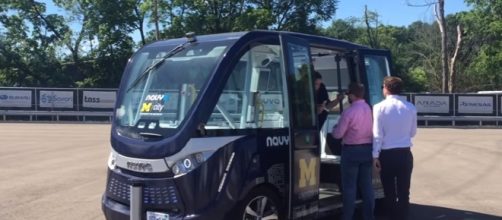Self-driving vehicles are gaining a lot of popularity and many car-makers are developing technologies for autonomous vehicles. Several universities are also researching driverless car technologies. The University Of Michigan has announced that it will now carry students in two autonomous cars on the university campus. The two vehicles will operate in the north campus of the University of Michigan, in Ann Arbor.
University of Michigan to use autonomous cars to ferry students
The two self-driving vehicles will be able to seat 15 passengers at a time and is part of a project undertaken by Mcity, which is a mock city, developed in collaboration with the University of Michigan to test out the safety and viability of these driverless cars.
Other private corporations and enterprises are also involved with the creation MCity.
The two shuttles have been developed by France-based company Navya, and will ferry students, faculty members, and staff along a two mile stretch of road between the Lurie Engineering Center and the North Campus Research Complex. The vehicles are equipped with invisible laser beams, known as lidars, which can determine if there are any obstacles in the way. The autonomous cars also house GPS systems, built in Wi-Fi, and cameras along with data recording equipment to capture the performance during each trip.
The cameras will record how the passengers react to the technology. The understanding of passenger reaction will help improve these vehicles when they are commercially available on the market.
The external cameras will also record the reaction of drivers of other cars as well as pedestrians to gauge how they respond to the autonomous cars. Surveys will also be conducted to get feedback from riders in the two shuttles to make further improvements in design and features.
Feature of the two autonomous vehicles
The Navya shuttles house a 33-kWh battery which can provide enough juice to run for nine hours off a single charge.
This means that each vehicle will be able to complete the drives for each day without needing to be recharged in between. Charging can be undertaken both with and without wires.
However, wireless charging takes significantly longer and will perhaps need to be improved in the future. The vehicles can achieve speeds of 15mph, however, if all the tethers are removed, the speed significantly increases to 28mph. It is expected that the two shuttles will cover the two-mile long journey in around 10 minutes and the passengers will not be charged any money.


